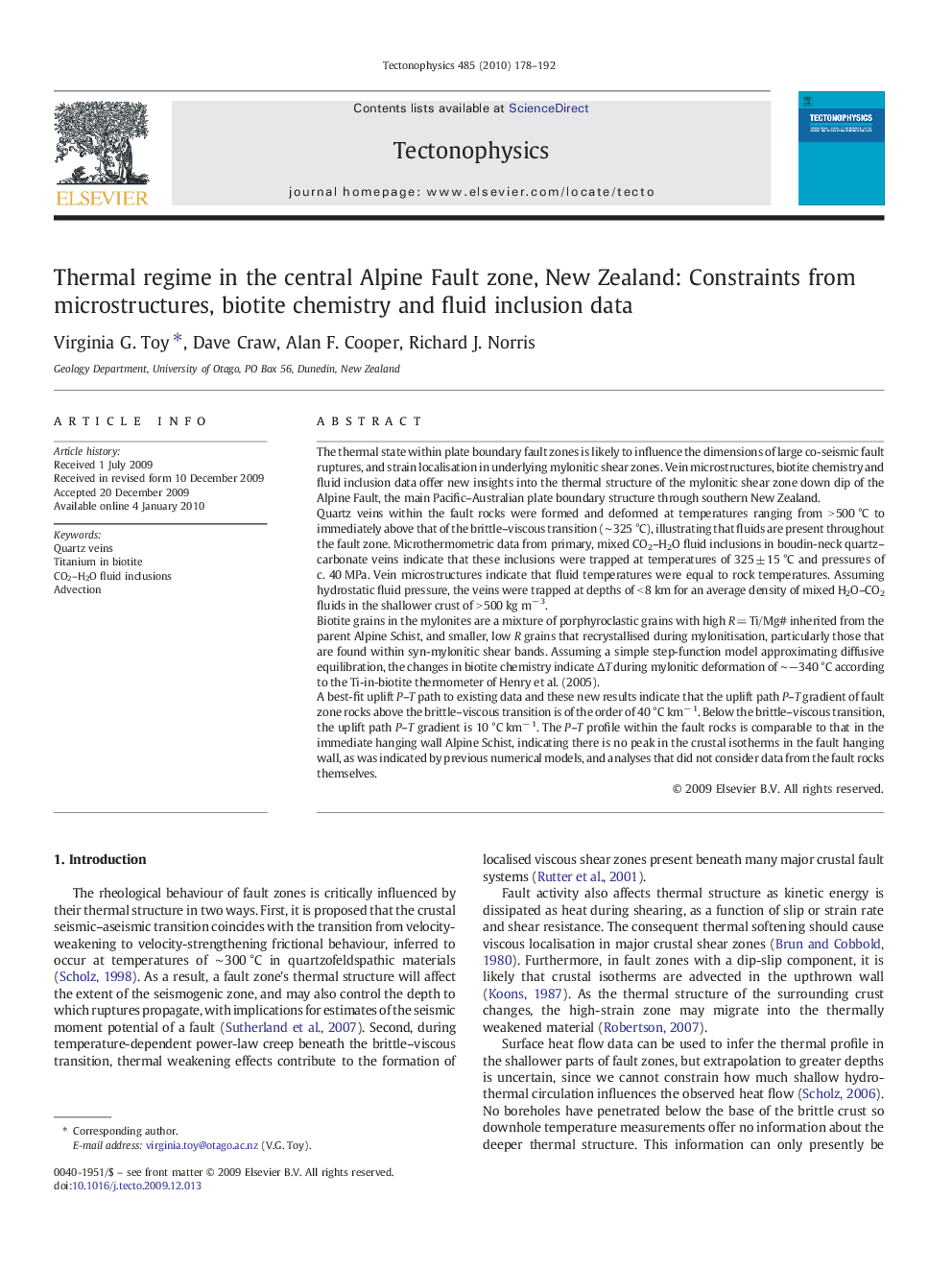| کد مقاله | کد نشریه | سال انتشار | مقاله انگلیسی | نسخه تمام متن |
|---|---|---|---|---|
| 4693646 | 1636870 | 2010 | 15 صفحه PDF | دانلود رایگان |

The thermal state within plate boundary fault zones is likely to influence the dimensions of large co-seismic fault ruptures, and strain localisation in underlying mylonitic shear zones. Vein microstructures, biotite chemistry and fluid inclusion data offer new insights into the thermal structure of the mylonitic shear zone down dip of the Alpine Fault, the main Pacific–Australian plate boundary structure through southern New Zealand.Quartz veins within the fault rocks were formed and deformed at temperatures ranging from > 500 °C to immediately above that of the brittle–viscous transition (∼ 325 °C), illustrating that fluids are present throughout the fault zone. Microthermometric data from primary, mixed CO2–H2O fluid inclusions in boudin-neck quartz–carbonate veins indicate that these inclusions were trapped at temperatures of 325 ± 15 °C and pressures of c. 40 MPa. Vein microstructures indicate that fluid temperatures were equal to rock temperatures. Assuming hydrostatic fluid pressure, the veins were trapped at depths of < 8 km for an average density of mixed H2O–CO2 fluids in the shallower crust of > 500 kg m− 3.Biotite grains in the mylonites are a mixture of porphyroclastic grains with high R = Ti/Mg# inherited from the parent Alpine Schist, and smaller, low R grains that recrystallised during mylonitisation, particularly those that are found within syn-mylonitic shear bands. Assuming a simple step-function model approximating diffusive equilibration, the changes in biotite chemistry indicate ΔT during mylonitic deformation of ∼−340 °C according to the Ti-in-biotite thermometer of Henry et al. (2005).A best-fit uplift P–T path to existing data and these new results indicate that the uplift path P–T gradient of fault zone rocks above the brittle–viscous transition is of the order of 40 °C km− 1. Below the brittle–viscous transition, the uplift path P–T gradient is 10 °C km− 1. The P–T profile within the fault rocks is comparable to that in the immediate hanging wall Alpine Schist, indicating there is no peak in the crustal isotherms in the fault hanging wall, as was indicated by previous numerical models, and analyses that did not consider data from the fault rocks themselves.
Journal: Tectonophysics - Volume 485, Issues 1–4, 1 April 2010, Pages 178–192